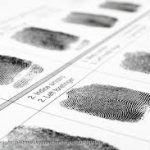Can I Have My Fingerprint and Photograph Records Destroyed?
Why Do the Police Take Fingerprints and Photographs?
When making an arrest, police must make sure they have the right person when investigating a crime and making arrests. One way they do this is by gathering information known as criminal or identification particulars. These items often include photographs, fingerprints and palm prints.
When a person is arrested, the Law Enforcement (Powers and Responsibilities) Act 2012, section 133 permits police to take fingerprints and photographs. Consent from the person is not required. However, some of the cases in which identification particulars are taken never result in charges or convictions. Sometimes, the individuals involved are so relieved about not having to go through the legal process they never think of what becomes of their fingerprints, palmprints and identifying photographs. Others however, have privacy concerns about the police retaining their personal information.
Never assume that, just because charges were dismissed or a not guilty verdict entered, identifying information is automatically destroyed and removed from police records. If you are found not guilty or charges are withdrawn, your personal information will still be on file with the police.
Is the Destruction of Identifying Material Required?
The Crimes Act requires the destruction of identification materials if:
- The reason the fingerprints were taken was for identification purposes.
- 12 months must have passed since they were taken, and
- No legal proceedings were started (or if started, they were discontinued).
The identification material must be destroyed as soon as practicable. The same is true for cases involving no recorded conviction or an acquittal with no pending appeal or further investigation.
What “practicable” means in terms of how quickly material is destroyed is another matter. Unfortunately, the laws do not set a specific time period for destroying records. This means that a “reasonable” amount of time depends upon everything going on at the time a request is made. Because a lot of time can go by before a request is acted upon, making a request for the destruction of records might be the best way to ensure timely destruction of fingerprints and palmprints.
Applying for Destruction of Fingerprint and Photograph Records
The Criminal Records Unit of the NSW Police makes decisions on granting or denying requests. Requests must be made in writing. In NSW, granting requests for destruction of records depends upon whether the case was not proven.
The following indicate an offence is “not proven“:
- Verdict of not guilty or acquittal
- Conviction quashed and acquittal entered on appeal
- 12 months (or the end of any extension period) elapse from when the fingerprints or palmprints were taken without initiation of, or discontinuation of proceedings.
Applications must include:
- The full name and date of birth under which the person was charged
- The date charged
- The offence type
- The court date
- The court outcome
Requests must be addressed to the Manager of the Criminal Records Section, Locked Bag 5102, Parramatta NSW 2124.
Juvenile Records
Obtaining photographs and fingerprints of children under 14 years of age requires the police obtain a court order (Law Enforcement (Powers and Responsibilities) Act 2002, section 136). Children under 14 who are not charged, found not guilty or whose convictions are dismissed on appeal may later request destruction of records (Law Enforcement (Powers and Responsibilities) Act 2002, section 137. 37a). The parent or guardian of a child may make the request on behalf the child.
What about the Destruction of Convicted Criminals’ Fingerprints and Photographs?
Between 2008 and 2012, eight offenders whose records led to a conviction failed to have their prints destroyed after application, but more than 100 applicants succeeded in their request. The justice system is based on the concept of innocent until proven guilty. While not all those applying for destruction of fingerprints and photographs possess a pristine criminal past, there are many individuals wrongly charged with a crime who understandably want a clean record.
Locating Existing Records
That being said, some people are not sure if they have any records with the police, so the first step in the process of requesting that fingerprints and photographs be destroyed is finding out if records even exist.
The Information and Privacy Commission NSW (IPC) suggests speaking with the Information Access Unit for the NSW Police. Although information may be provided informally over the phone, a formal access application under the GIPA Act may be required. The NSW Police Information Access Unit’s telephone number is (02) 8835 6888 and email address is: iau@police.nsw.gov.au.
If you think you might have fingerprint or photographs records with the police and you want them destroyed, a criminal lawyer can help.







